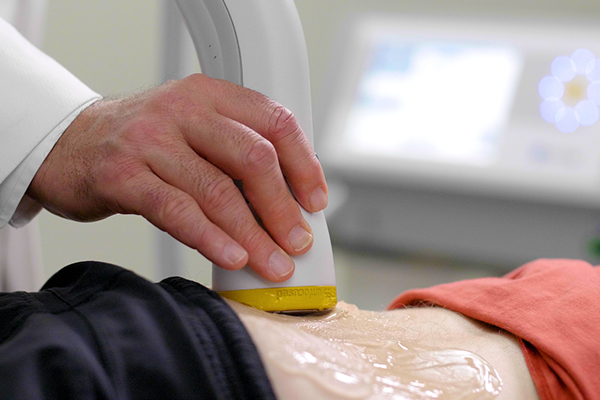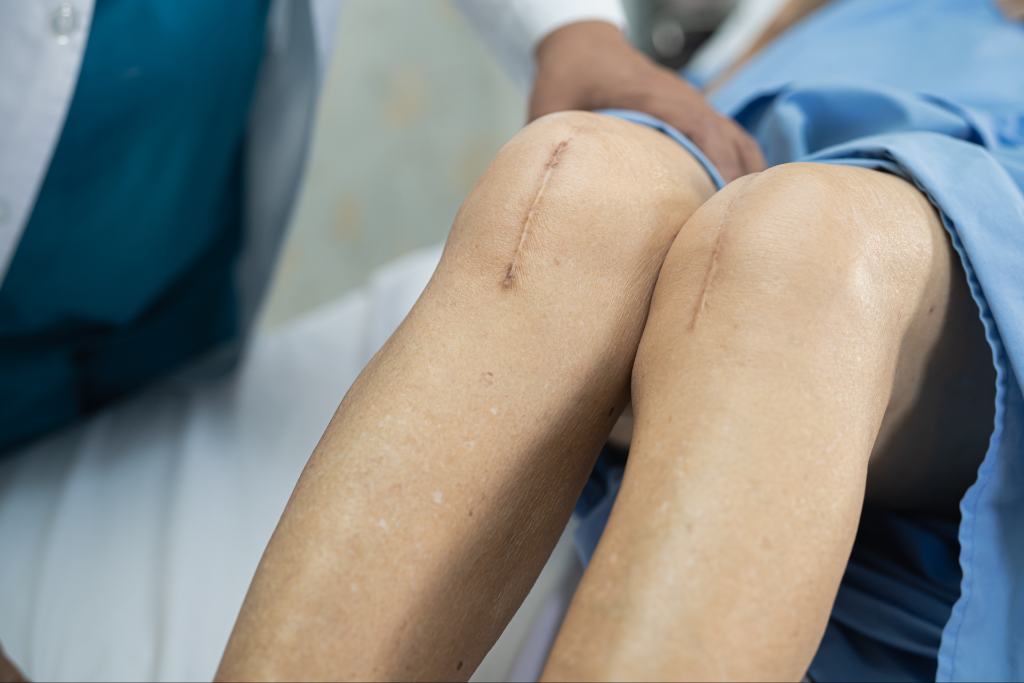Nerve pain is a persistent issue affecting a significant portion of the population. While multiple treatment methods exist, not all provide the desired results. Consequently, patients often seek alternative solutions to mitigate their discomfort. Recent research indicates that shockwave therapy might be an effective strategy for managing nerve pain without resorting to costly surgeries or prescription medication with potential side effects.
In this blog post, we’ll explore:
- Causes of Nerve Pain
- Advantages of Shockwave Therapy for Nerve Pain
- Mechanics of Shockwave Therapy
- The Nature of Shockwaves
- How do Shockwaves Alleviate Nerve Pain?
- Varieties of Shockwave Therapy
- Ideal Candidates for Shockwave Therapy
- The Shockwave Therapy Process
- Potential Side Effects of Shockwave Therapy
- The Best Shockwave Therapy for Nerve Pain
Causes of Nerve Pain

Nerve pain can originate from numerous sources, including poor posture or underlying medical conditions. Here are some prevalent causes of nerve pain:
- Neuropathy: Conditions like peripheral neuropathy can cause nerve damage, leading to pain.
- Injury or trauma: Accidents, falls, or physical trauma can result in nerve injury and subsequent pain.
- Nerve compression or entrapment: Conditions such as carpal tunnel syndrome can cause pressure on nerves, leading to pain.
- Diabetes: Nerve damage is a common complication of diabetes, often resulting in pain.
- Shingles: This viral infection can cause severe nerve pain.
- Other medical conditions such as fibromyalgia or multiple sclerosis: These conditions can cause chronic nerve pain.
It’s important to note that these are just some of the most common causes of nerve pain. If you are experiencing nerve pain, you can learn if your condition is suitable for treatment and try shockwave therapy with our New Patient Special.
Advantages of Shockwave Therapy for Nerve Pain
As a treatment for nerve pain, shockwave therapy is an appealing non-invasive alternative with a variety of benefits. The therapy uses high-energy shock waves to promote healing in the affected area. Here are some advantages of utilizing shockwave therapy for nerve pain:
Enhanced Healing
Shockwave therapy leverages high-energy sound waves to stimulate the body’s natural healing process, accelerating the repair of damaged tissues, including nerves. This is particularly beneficial for those suffering from persistent or recurring nerve pain.
Minimized Dependence on Medications
Conventional nerve pain treatments often involve medications that can carry undesired side effects. Shockwave therapy is a drug-free alternative, reducing the need for pain medications or other treatments, making it an appealing choice for those who prefer non-pharmacological interventions.
Improved Quality of Life
Nerve pain can greatly hamper quality of life, hindering everyday activities or recreational pursuits. Shockwave therapy can alleviate pain and enhance mobility, enabling patients to resume their normal routines and enhance their quality of life.
Non-Invasive and Safe
Unlike many nerve pain treatments, shockwave therapy is non-invasive and safe. It doesn’t require incisions or anesthesia and carries a low risk of complications, making it a suitable option for those wishing to avoid more invasive interventions.
In summary, shockwave therapy is a promising treatment alternative for those plagued with nerve pain.
Mechanics of Shockwave Therapy
Shockwave therapy is a non-invasive treatment that employs high-energy acoustic waves to stimulate the body’s natural healing process. Here’s how it works:
The Nature of Shockwaves
Shockwaves are swift acoustic pulses comprising a high-pressure surge followed by a comparatively low-pressure trough. These phenomena occur regularly in our lives, produced by various events such as supersonic jets, explosions, thunder, earthquakes, or any incident causing a change in air pressure.
How do Shockwaves Alleviate Nerve Pain?
A specialized device is used to produce and safely administer shockwaves to the nerve pain area. These shockwaves promote healing at the cellular level, enhancing blood supply, and triggering the body’s innate healing process.
Varieties of Shockwave Therapy
There are several types of shockwave therapy available, the most common being radial shockwave therapy (RSWT), focused shockwave therapy (FSWT), and acoustic wave therapy (AWT).
Radial Shockwave Therapy uses a hand-held device that applies pressure waves to the skin’s surface. It is widely used for conditions such as plantar fasciitis, Achilles tendinopathy, and tennis elbow. It may be less effective for deeper tissue injuries, and multiple treatment sessions may be needed.
Focused Shockwave Therapy employs a device that delivers high-intensity shockwaves directly to the affected area. It is often used for treating chronic conditions like plantar fasciitis and bone fractures that are slow to heal. It may cause discomfort to some patients, and the treatment’s intensity may need to be tailored based on individual needs.
Acoustic Wave Therapy uses a device that provides low-intensity shockwaves to the affected area. It is commonly used to enhance blood flow, reduce pain and inflammation, and foster tissue healing. It is often used to treat conditions such as erectile dysfunction and cellulite. However, the low-intensity shockwaves may not be effective for treating some conditions.
broad-focused Shockwave Therapy delivers high-intensity shockwaves that penetrate a broader and deeper area of tissue (7cm x 12cm) than focused shockwaves (1cm x 12cm) or radial waves (2cm x 2cm). SoftWave for nerve pain is the only widely available broad-focused shockwave treatment in the US. broad-focused shockwaves can treat the same conditions as traditional focused shockwave therapy while providing superior relief for extensive joints and muscle issues such as shoulder, neck, or nerve pain. broad-focused shockwaves may also require fewer sessions compared to radial or focused shockwave treatments.
Ideal Candidates for Shockwave Therapy

Some factors that may make a patient a suitable candidate for shockwave therapy include:
- Patients with chronic nerve pain
- Patients who have seen limited success with other therapies
- Patients preferring non-invasive treatment options
Patients suffering from chronic nerve pain may find shockwave therapy a viable treatment option. This includes those with conditions such as neuropathy, sciatica, and carpal tunnel syndrome. In cases where traditional treatments like medication and physical therapy fail to provide significant relief, shockwave therapy may offer a promising alternative.
Moreover, patients who have undergone other therapies with limited success may also benefit from shockwave therapy for their nerve pain. These may include individuals who have tried multiple conservative treatment options without experiencing sufficient pain relief.
For patients preferring non-invasive treatments, shockwave therapy offers a non-surgical approach that does not require incisions or anesthesia. This can make it an appealing treatment option for those who wish to avoid more invasive procedures.
The Shockwave Therapy Process
Knowing what to anticipate during a shockwave therapy session is an important step for patients considering this treatment for their nerve pain. In this section, we’ll outline the shockwave therapy process:
- Preparation: Before the treatment, an ultrasound gel is applied to the nerve pain area. The shockwave device is then carefully placed against the skin.
- During the Procedure: Patients will sense a light tapping or pulsing feeling as shockwaves are directed to the affected area. Some may experience slight pain or discomfort, but anesthesia or numbing agents are typically not necessary. Effective communication between the patient and provider can help pinpoint treatment hotspots and monitor progress.
- After the Procedure: After the 10-15 minute procedure, patients can generally return to their normal activities, with no recovery time necessary. Some doctors may recommend avoiding high-impact movements or exercise for 24-48 hours.
Potential Side Effects of Shockwave Therapy
Shockwave therapy is generally safe and well-tolerated, with few side effects. However, like any medical procedure, there is a minor risk of side effects. Some of the most commonly reported side effects of shockwave therapy for nerve pain include:
- Pain or discomfort during or after treatment
- Swelling or bruising
- Redness or skin irritation
- Numbness or tingling
These side effects are typically mild and short-lived. Most patients can resume their normal activities right after the procedure.
FDA-cleared SoftWave is a safe and effective shockwave therapy for nerve pain. Side effects from SoftWave are minimal and non-restrictive. It does not cause bruising or swelling, and any slight redness or soreness usually subsides within one to two days.
The Best Shockwave Therapy for Nerve Pain
Are you looking for safe, reliable, and effective relief from nerve pain?
SoftWave therapy is FDA-cleared, patented, and nationally recognized for its leading tissue regeneration technology. Unlike other types of high-energy shockwave treatments, SoftWave is the only shockwave therapy on the market that uses true broad-focused shock waves that treat larger and deeper areas of tissue.
Thousands of patient’s have experienced the benefits of SoftWave for nerve pain, including:
- Little to no side effects
- Short treatment time
- Quick recovery
- Long-lasting results
Find a SoftWave Therapy provider near you or learn more about SoftWave and whether or not you’re eligible for full treatment today!
New Patient Special
Try SoftWave for just $69 at a clinic near you and learn if you’re a candidate for full treatment




